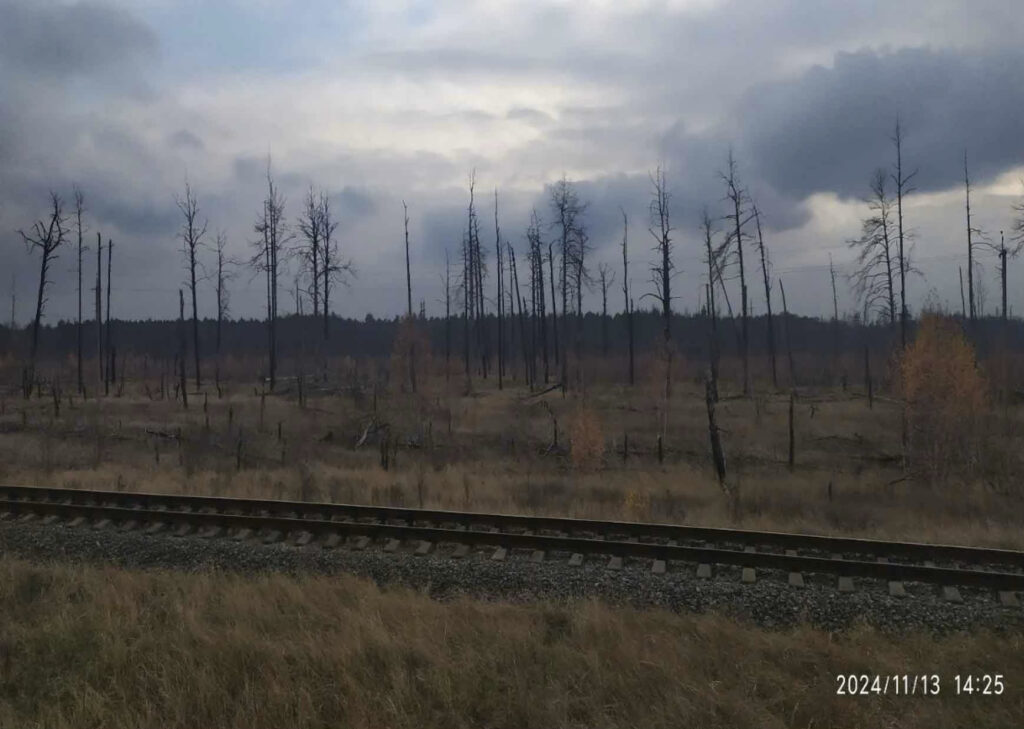A new publication of the Laboratory of Radiation Monitoring specialists on radioactive contamination of groundwater in the Chornobyl Exclusion Zone
Specialists of the Laboratory of Radiation Monitoring of the State Institution «Marzieiev Institute for Public Health of the National Academy of Medical Sciences of Ukraine» prepared a scientific publication in cooperation with specialists of the Institute for Nuclear Power Plant Safety of the National Academy of Sciences of Ukraine «REGARDING THE POSSIBLE IMPACT OF FOREST FIRES ON THE RADIOACTIVE POLLUTION OF GROUNDWATER IN THE CHORNOBYL EXCLUSION ZONE.»
Reference: Panasiuk, M., Buzynnyi, M., Kirieiev, S. et al. Regarding the possible impact of forest fires on the radioactive pollution of groundwater in the chornobyl exclusion zone. Sci Rep 15, 13910 (2025). https://doi.org/10.1038/s41598-025-99095-5
Summary of the article.
Wood contamination in the Chornobyl Exclusion Zone (CEZ) with 137Cs and 90Sr reaches tens of kBq/kg. Fires are natural disasters that fundamentally alter the forest ecosystem. The largest fires in the CEZ occurred in 2020 at the temporary radioactive waste storage facility (PTLRW) known as “Red Forest”, where the peak of 90Sr activity in wood was recorded. Subsequently, the level of 90Sr in groundwater samples from observation wells in this section of the CEZ increased by 2 to 60 times, rising from approximately 2 to about 180 Bq/l beginning in late 2022. The laboratory experiment utilized typical pinewood and forest litter samples. Laboratory studies show that burning 1 kg of dry pinewood produces approximately 2.8 g of ash, with a concentration of 90Sr in the ash that is approximately 360 times higher. The specific activity of 90Sr in the ash from six wood samples ranged from 160 to 3400 kBq/kg. Under suitable experimental conditions, the specific activity of 90Sr in the leachate samples ranged from 0.5 to 0.72 kBq/L. The proportion of 90Sr leached during the experiment varied from 12 to 33% for wood ash and 10.8–13.2% for forest litter ash. The complete combustion of 10% of the wood in the burn site area of the PTLRW “Red Forest” CEZ, influenced by a two-year rainfall volume, releases a secondary source of 90Sr available for migration with groundwater, with an intensity of at least 0.69 GBq/ha or more than 17 GBq/ha in the trench burial area of “Red Forest”. Under these conditions, this source can reach 38 TBq in the 550 km² burn site area. The minerals in wood ash are easily washed away by water, leading to increased groundwater mineralization and higher ionic strength. This, in turn, reduces the soil’s sorption capacity and enhances the migration capacity of 90Sr in the aquifer. The transformation of wood and forest litter into ash due to a forest fire concentrates radioactivity in it, which lies on the soil surface, making it vulnerable to rapid leaching by atmospheric precipitation. As a result, this radioactivity can become a significant local source of radioactive contamination of surface and groundwater, which requires updating the radioactivity monitoring regulations in the relevant observation wells of the CEZ.
Keywords: Forest fires, Wood, Forest litter, Ash, Groundwater, 90Sr, Pollution sources, Mineralization, Ionic strength of the solution.
Head of the Laboratory of Radiation Monitoring
Doctor of Biological Sciences Mykhailo Buzynnyi
(date of publication on the website 25.04.2025)
